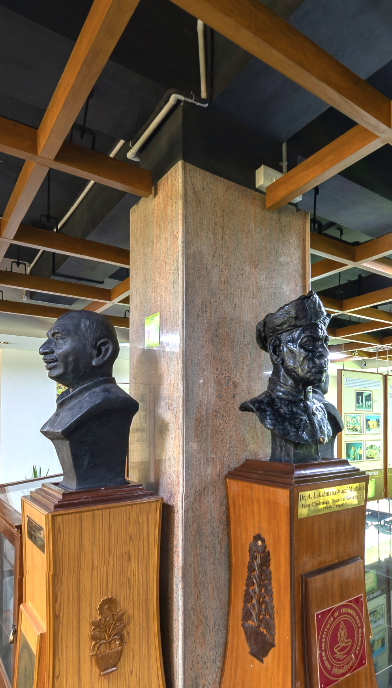Dr. A. E. Muthunayagam speaks at the 42nd Convocation, 2005
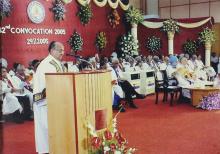
- Photographs , 2000s
The Heritage Centre would be grateful to receive more information regarding this photograph. This section will be updated when we receive more details.
An interaction between the faculty members and the distinguished guests at the 42nd Convocation, 2005
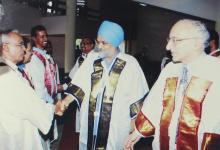
- Photographs , 2000s
The Heritage Centre would be grateful to receive more information regarding this photograph. This section will be updated when we receive more details.
A welcome sign for the chief guest for the 42nd Convocation, 2005

- Photographs , 2000s
The Heritage Centre would be grateful to receive more information regarding this photograph. This section will be updated when we receive more details.
A student receives a degree at the 42nd Convocation, 2005
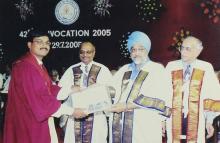
- Photographs , 2000s
The Heritage Centre would be grateful to receive more information regarding this photograph. This section will be updated when we receive more details.
Mr. Montek Singh Ahluwalia presents a degree at the 42nd Convocation, 2005

- Photographs , 2000s
The Heritage Centre would be grateful to receive more information regarding this photograph. This section will be updated when we receive more details.
Mr. Montek Singh Ahluwalia shakes hands with a faculty member at the 42nd Convocation, 2005
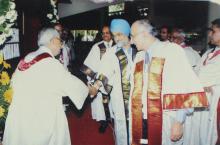
- Photographs , 2000s
The Heritage Centre would be grateful to receive more information regarding this photograph. This section will be updated when we receive more details.
In conversation at the 42nd Convocation, 2005
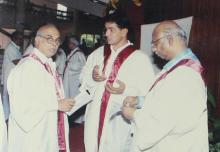
- Photographs , 2000s
The Heritage Centre would be grateful to receive more information regarding this photograph. This section will be updated when we receive more details.
A view of the audience during the 42nd Convocation, 2005
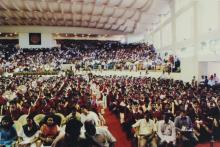
- Photographs , 2000s
The Heritage Centre would be grateful to receive more information regarding this photograph. This section will be updated when we receive more details.
A view of the stage during the 42nd Convocation ceremony, 2005
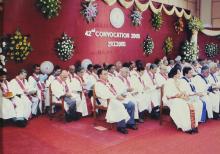
- Photographs , 2000s
The Heritage Centre would be grateful to receive more information regarding this photograph. This section will be updated when we receive more details.
A student receives a degree at the 42nd Convocation (2005)
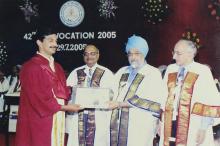
- Photographs , 2000s
The Heritage Centre would be grateful to receive more information regarding this photograph. This section will be updated when we receive more details.
Mr. Montek Singh Ahluwalia presents a degree at the 42nd Convocation, 2005
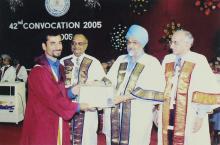
- Photographs , 2000s
The Heritage Centre would be grateful to receive more information regarding this photograph. This section will be updated when we receive more details.
At the 42nd Convocation of IIT Madras, 2005
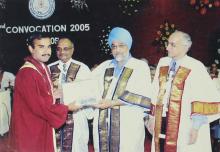
- Photographs , 2000s
The Heritage Centre would be grateful to receive more information regarding this photograph. This section will be updated when we receive more details.
Smoke nuisance test on model of SS State of Bombay
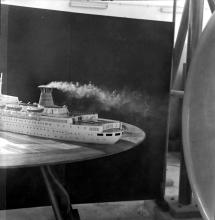
- Photographs , Academic Facilities, Departments
In the 1960s, the Applied Mechanics Department of IIT Madras had a wind tunnel among its facilities. German technicians came to the Institute to assemble the tunnel which became functional in the late 1960s. It was used for industry work (smoke nuisance) and laboratory work for a few years. The wind tunnel was eventually dismantled some decades after it was put up. SS State of Bombay was one of the ships operated by the British India Steam Navigation Company, also known as the BI Line. The ship plied the India to East Africa sea lanes along with other ships such as the Karanja, Amra,…
Smoke nuisance test on model of SS State of Bombay
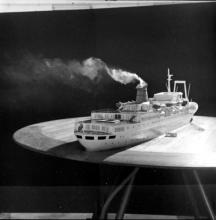
- Photographs , Academic Facilities, Departments
In the 1960s, the Applied Mechanics Department of IIT Madras had a wind tunnel among its facilities. German technicians came to the Institute to assemble the tunnel which became functional in the late 1960s. It was used for industry work (smoke nuisance) and laboratory work for a few years. The wind tunnel was eventually dismantled some decades after it was put up. SS State of Bombay was one of the ships operated by the British India Steam Navigation Company, also known as the BI Line. The ship plied the India to East Africa sea lanes along with other ships such as the Karanja, Amra,…
Smoke nuisance test on model of SS State of Bombay
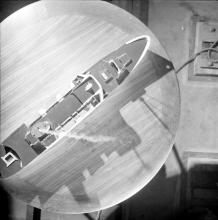
- Photographs , Academic Facilities, Departments
In the 1960s, the Applied Mechanics Department of IIT Madras had a wind tunnel among its facilities. German technicians came to the Institute to assemble the tunnel which became functional in the late 1960s. It was used for industry work (smoke nuisance) and laboratory work for a few years. The wind tunnel was eventually dismantled some decades after it was put up. SS State of Bombay was one of the ships operated by the British India Steam Navigation Company, also known as the BI Line. The ship plied the India to East Africa sea lanes along with other ships such as the Karanja, Amra,…
- Contribute
to the Centre -
Monetary
Support - Digital
Material

